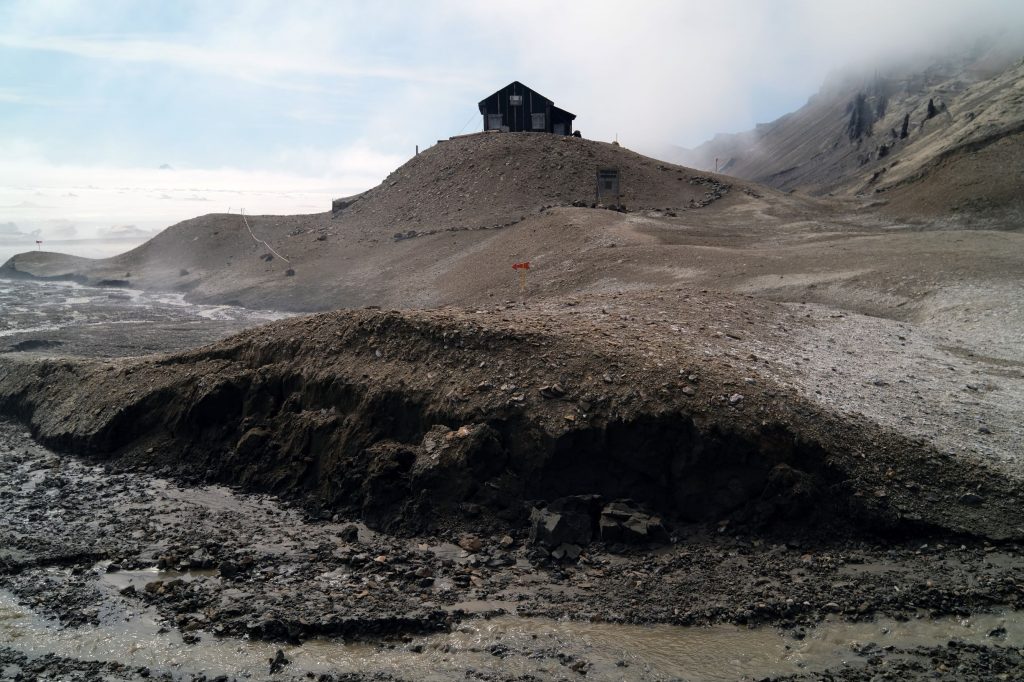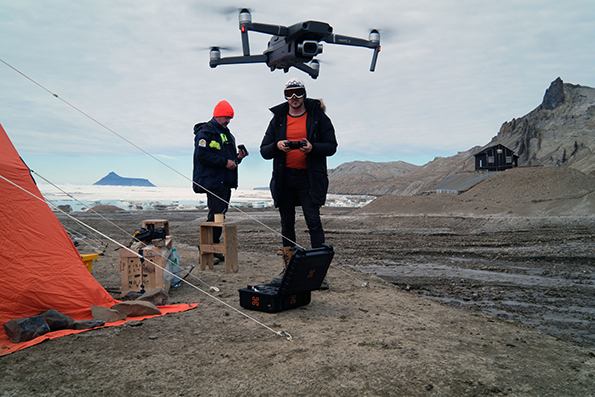
Melting ice threatens the remains of a historic polar expedition
The remains of Otto Nordenskjöld’s Antarctic expedition are still well preserved. However, melting ice and rising temperatures risk sweeping them into the sea. New documentation will provide a basis for future management, while also disseminating knowledge about a cultural heritage that is largely unknown to many people.
On Snow Hill Island in northern Antarctica, a solitary wooden house stands on the shore looking out towards the Weddell Sea. Wires anchor the house firmly in the rocky ground, to protect against winds which can sometimes be very strong. Inside there are three small bedrooms and a simple kitchen. Otto Nordenskjöld lived and worked here with some members of his polar expedition for almost two years in the winters of 1902 and 1903.
“The house is in surprisingly good condition. Photographs and information signs have now been put up, and the house today is like a local heritage museum, but the sense of being there when it happened is still palpable,” says Gunnar Almevik, buildings antiquarian and professor at the University of Gothenburg.
At the end of December, Gunnar Almevik and his colleague Jonathan Westin travelled together with a Swedish-Argentine research team, CHAQ2020, to Antarctica. Their task: on behalf of the Swedish National Heritage Board, to document and assess the condition of the five memorials left by the Swedish polar expedition of 1901–1903.
Climate change the biggest threat
“What kind of remains are they? What is their status? What needs to be done? Until now there has not been any concerted knowledge base. A great deal of the individual remains are still in good condition,” says Gunnar Almevik. But they are threatened by climate change.
“Putting on new tar paper and fixing the windows in the house on Snow Hill is relatively easy. The serious threat, and this applies to all the remains of Nordenskjöld’s polar expedition, comes from the changing climate,” he says.
According to Gunnar Almevik, it is not possible to have a conservation horizon of one hundred years. At present thirty or fifty years would be more reasonable. Moving the remains is one possibility, but he observes that it is difficult to find places nearby that would be less vulnerable to climate change.
“We can compare our digital documentation with the historical photographs and precise surveys from 1901 which documented Snow Hill and the immediate surroundings of the research station. This clearly shows that the hills where laboratories and measuring stations were set up have been partly eroded and floated out to sea.
All the remains visited by the team have been documented and described with regard to their condition, the risks and the need for action. Assessment of the condition is based on the international standard for condition surveys of built cultural heritage (SS-EN 16096:2012).
An important purpose of the documentation is to provide data on how cultural heritage should be maintained and managed in the future. In Antarctica there are just under a hundred historical sites and memorials protected by the Antarctic Treaty. Responsibility for management of the remains of the Nordenskjöld expedition is shared between Argentina and Sweden.
“We are preparing a report which will be used as a basis for further discussions of what Sweden can do with the remains,” says Gunnar Almevik.

Visualizing an inaccessible cultural heritage
He hopes that their extensive documentation will also help spread knowledge about an almost forgotten cultural heritage. The house on Snow Hill Island, along with other remains and the surrounding landscape, was documented using technology such as drones, laser scanning and photogrammetry, but also by traditional methods with sketches and descriptions. The researchers also made films and recorded many different sounds, such as storms and penguins.
“There are great educational opportunities, and we want the public to be able to experience these environments, perhaps virtually or through an interactive model.”
Talks are already underway with the Centre for Digital Humanities at the University of Gothenburg. The Polar Centre in Gränna has also shown an interest, according to Gunnar Almevik.
“We will make all the data available and ensure that anyone who so wishes will be able to access it. Then it is up to others to make the material educationally interesting. That’s a task for the museums,” says Gunnar Almevik.
The report to the National Heritage Board is expected to be completed in spring 2020. Gunnar Almevik hopes that data from the documentation will be available later in the year.